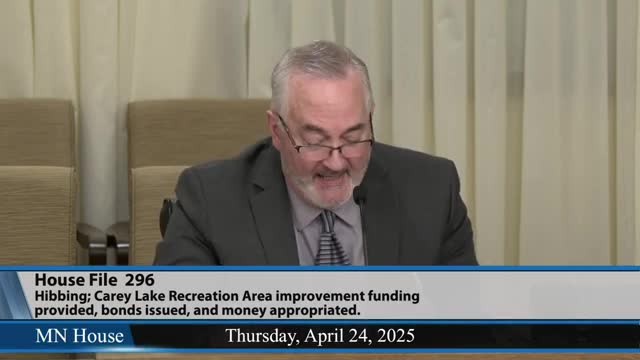Mayor Jennings seeks $5.7M for Tonka Bay's urgent infrastructure improvements
April 24, 2025 | 2025 Legislature MN, Minnesota
Thanks to Scribe from Workplace AI , all articles about Minnesota are free for you to enjoy throughout 2025!

This article was created by AI using a video recording of the meeting. It summarizes the key points discussed, but for full details and context, please refer to the video of the full meeting. Link to Full Meeting
The city of Hibbing took center stage, with officials highlighting their commitment to a transformative campground project. With a local match of $1 million already secured, Hibbing's leaders expressed confidence that the campground would not only attract visitors from across the state but also generate revenue for future park improvements. "This project is vital to the economic development of a community and the region," one representative stated, underscoring the importance of creating a destination recreation area that fosters outdoor enjoyment and well-being for generations to come.
As discussions progressed, the focus shifted to Tonka Bay, where Mayor Adam Jennings passionately addressed the dire need for infrastructure upgrades. He recounted the city's struggles with aging water and sewer systems, which had led to a staggering increase in water main breaks—24 incidents in just two years. Jennings painted a vivid picture of the challenges faced by residents, particularly the elderly and vulnerable, during these disruptions. "Each break would leave the entire city without water for extended periods," he explained, emphasizing the urgency of the situation. With a request for $5.7 million to continue necessary improvements, Jennings highlighted the city's commitment to ensuring reliable services for its residents.
The meeting showcased a shared vision among local leaders: to invest in their communities and create sustainable environments that support both current and future generations. As the committee members listened intently, it became clear that these projects are not merely about infrastructure; they represent a lifeline for communities striving to thrive in an ever-changing landscape. The discussions left attendees with a sense of hope and anticipation for the positive impacts these initiatives could bring to Minnesota's diverse regions.
Converted from House Capital Investment Committee 4/24/25 meeting on April 24, 2025
Link to Full Meeting
Comments
View full meeting
This article is based on a recent meeting—watch the full video and explore the complete transcript for deeper insights into the discussion.
View full meeting